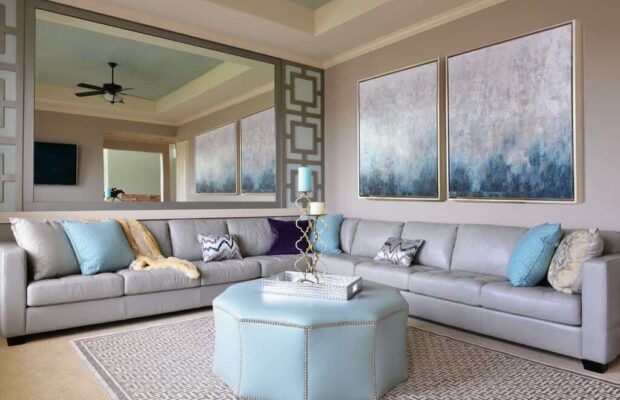Our homes are sanctuaries – places of relaxation, creativity, and rejuvenation. The colors we choose for our interior spaces play a significant role in shaping the atmosphere and influencing our moods. But with a seemingly endless color palette at your disposal, choosing the right hues can feel overwhelming. Fear not, fellow design enthusiasts! This guide will equip you with simple strategies to navigate the world of color and select the perfect shades to bring your dream home to life.
1. Consider the Mood You Want to Create
Colors have a profound impact on our emotions. Understanding the psychology of color is key to achieving the desired ambiance in each room. Here’s a quick breakdown of some popular color associations:
· Warm Colors:
Reds, oranges, and yellows evoke feelings of energy, warmth, and passion. These colors are ideal for living rooms, dining areas, or creative spaces.
· Cool Colors:
Blues, greens, and purples promote feelings of calmness, relaxation, and serenity. These colors are perfect for bedrooms, bathrooms, or home offices.
· Neutrals:
Whites, grays, and beiges offer a sense of peace, neutrality, and can act as a canvas for bolder accent colors. Neutrals are versatile and can be used throughout the home.
2. Reflect on Your Existing Lighting
Natural light plays a crucial role in how colors appear. Rooms bathed in warm southern sun can handle cooler colors, while north-facing rooms with cooler light might benefit from warmer hues. Artificial lighting can also influence the feel of a space. Consider the type of bulbs you use – incandescent lights cast a warm glow, while LEDs tend to be cooler. Take note of the existing lighting conditions in each room when selecting your color scheme.
3. Embrace the Power of the Rule of Three
The rule of three is a design principle that suggests limiting your color palette to three main colors. This creates a cohesive and balanced look, preventing your space from feeling visually overwhelming. Here’s how to break it down:
· Dominant Color:
This is the main color that will cover the largest area, often used on walls.
· Secondary Color:
This complementary color is used in a smaller proportion, often on furniture or accent walls.
· Accent Color:
A pop of color used sparingly for visual interest, often seen in throw pillows, artwork, or rugs.
4. Draw Inspiration from Your Beloved Belongings
Do you have a favorite piece of artwork, a cherished rug, or a treasured family heirloom? These personal items can be a fantastic source of color inspiration. Identify the colors you love in these pieces and use them as a starting point for your color scheme. This approach ensures a cohesive look that feels personal and reflects your unique style. Once you’ve decided, remember that Koloreal offers uPVC colour coating.
5. Sample, Sample, Sample!
Never underestimate the power of paint samples! Before committing to a gallon of paint, purchase a few samples and paint swatches on your walls. Live with the colors for a few days, observing how they change throughout the day with the variation in natural and artificial light. This allows you to see how the colors truly interact with your space before making a final decision.
Bonus Tip: Utilize the Magic of Online Tools
Many paint companies and online design platforms offer virtual paint tools that allow you to upload a photo of your room and experiment with different color combinations. This is a fantastic way to visualize various options before picking up a paintbrush.
Choosing the right colors for your home doesn’t have to be a daunting task. By understanding the psychology of color, considering your existing lighting, and employing the rule of three, you can create a beautiful and inviting space that reflects your unique personality. Remember, the most important factor is to choose colors that make you feel happy and comfortable in your own home. So, grab your paint samples, unleash your creativity, and get ready to transform your living space into a haven of color and comfort!



